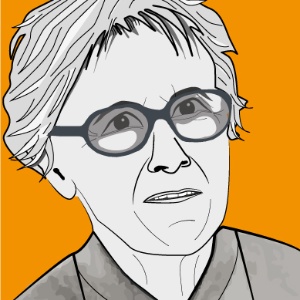| Time: | February 5, 2019, 4:00 p.m. (CET) |
|---|---|
| Venue: | University of Stuttgart Campus Vaihingen Multimedia Lab Pfaffenwaldring 61 70569 Stuttgart |
| Download as iCal: |
|
The Collaborative Research Center (SFB) 1313 “Interfacial driven multi-field processes in porous media – flow, transport and deformation” at the University of Stuttgart has reinforced the maxim of equal opportunities by changing the name of its Women’s Lecture Series to the Anneliese Niethammer Lecture Series. This series honors Anneliese Niethammer (1901-1983), an ecological microbiologist and the first female professor to teach at the University of Stuttgart. The first lecture, entitled “Data assimilation with soils and the question of the length scales”, will be delivered by Prof. Insa Neuweiler, Managing Director of the Institute Fluid Mechanics and Environmental Physics at the University of Hanover.
(This lecture will be held in English)
Anneliese Niethammer
The botanist and microbiologist Anneliese Niethammer was appointed as adjunct professor in 1947 at the Technical University Stuttgart (renamed University of Stuttgart in 1967) for the subject of applied botany. She graduated with a degree in agricultural science and botany from Charles University in Prague and was awarded a PhD in both subjects in 1925. In 1929 she qualified as a professor with her thesis on “Stimulationsprobleme an Pflanzen”. After the Second World War she moved to Baden-Württemberg and began teaching at the Technical University Stuttgart. She became Professor of Applied Botany and was appointed as adjunct professor (unpaid) in 1947. She earned her livelihood as a teacher in Ludwigsburg teaching chemistry and biology.
A pioneer in the field of ecological microbiology
During the 1920s and ‘30s in Prague, Anneliese Niethammer focused her research on influencing seed germination. In Stuttgart, her work concentrated on developing the examination of microscopic soil fungi and she became something of a pioneer in the field of ecologically oriented microbiology. This is reflected by her exceptional, internationally renowned contributions to applied botany, in particular ecological microbiology, a field that had previously received little attention. She was also known for being able to recognize the shapes of different soil fungi, and for her valuable collection of microscopic soil fungi and mold cultures.
About SFB 1313
Collaborative Research Center SFB 1313 aims to develop a fundamental knowledge understanding of how interfaces – for example between two fluids or between a fluid and a solid – influence flow, transport and deformation in porous media. This is also thematically linked to Niethammer’s work: within the scope of research on porous media, SFB 1313 also looks at soils and microorganisms.
Equal opportunity at SFB 1313
The subject of equal opportunities is very important to SFB 1313. On of the center’s most valued goals is to ensure that women working in male-dominated areas, such as science, technology or engineering, are given the opportunity to present their work and research on porous media once every semester.
This lecture series serves as a platform and is intended to encourage primarily young academics to pursue a scientific career. The lectures are open to all university students and employees.
Contact:
Patrizia Ambrisi, University of Stuttgart, VISUS, Tel. 0711/685-88612
For more information about this lecture by Prof. Insa Neuweiler go to To find out more about Anneliese Niethammer please go to


